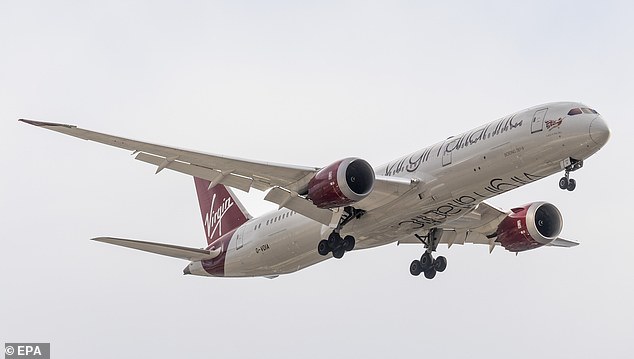
Why do shipping emissions receive far less scrutiny than aviation emissions, when both sectors cause the same amount of pollution?
While we’re on that subject, why are sustainable aviation fuels (SAFs) the talk of the sustainability town, but sustainable shipping fuels are not?
After all, just like aviation, the marine industry is responsible for as much as 3% of global C02 emissions annually.
Perhaps we feel collective guilt over skybound pollution due to our travel habits, without realising that pretty much everything we own comes to these shores via massive, fossil fuel-consuming cargo ships.
Perhaps that’s why there’s such a sharp focus on aviation pollution, not just from global regulators and the COP28 rabble, but from oil refineries like Finnish big-cap Neste, which is leading the charge in SAF production.


The rapid increase in SAF consumption (growing at a 50% compound annual growth rate according to Bank of America research) has led to a surge in related investment opportunities
The rapid increase in SAF consumption (growing at a 50% compound annual growth rate according to Bank of America research) has led to a surge in related investment opportunities, but is the market missing a trick by ignoring similar opportunities in the marine sector?
Enter AIM-listed company called Quadrise, which is deep in the development phase of its innovative sustainable shipping fuel technology.
Give Quadrise chief executive Jason Miles the chance, and he’ll wax lyrical about the intricacies of crude sugar oils, methyl esters and lignin cellulose, using a clutch of acronyms you’ve probably never heard of.
In layman’s terms, Quadrise is developing biofuels for the shipping industry to cut C02 emissions from 3% globally to potentially zero.
Quadrise has already developed a biofuel called BioMSAR, built from the group’s proprietary MSAR emulsion technology.
The secret ingredient – literally – in BioMSAR is renewable glycerin, a cheap, safe byproduct of both fatty acid manufacturing and biodiesel manufacturing.
Speaking to Miles, it’s clear that the shipping sector presents opportunities for innovation that simply can’t be done in the aviation sector.
He explained: ‘We are utilising BioMSAR as a means to introduce waste products into the shipping industry. Shipping is not like the aviation sector where you can only use SAF as a jet fuel replacement or HVO as a diesel replacement.
‘Rather, ship engines are quite flexible in what they can burn, and we’re using our technology to blend oil and water together.
‘Our first product, BioMSAR, gives you the efficiency benefits of around a 30% reduction in C02 today.
‘Then by phasing in more and more biofuel streams, whether oil or water-based, you can blend the two together to ultimately end up with a BioMSAR-Zero product.’
In other words, Quadrise is on track to develop a net-zero shipping fuel alternative.
Glycerin comprises around 40% of Quadrise’s current BioMSAR biofuel, but to reach the endgame of BioMSAR-Zero, the company is busy at work integrating sugars derived from biomass to replace glycerin.
After all, ‘sugar is the most basic form of energy that’s available organically today’ while being relatively cheap to source.
It’s a sophisticated concept that has its fair share of challenges to overcome, mainly because of good old economics.
‘Coming back to the analogy of SAF versus marine fuels, the aviation sector will pay for that fuel because customers will have to pay for it ultimately. Plus it’s been mandated by industry to switch the SAF going forward,’ said Miles.
‘But the marine industry is more flexible and they won’t pay for it unless it’s cheap. And that’s where we’re trying to come in with cheaper biofuels.’
For now, though, marine biofuels are more expensive than traditional fuels, although there are subsidies available in places like The Netherlands.
Meanwhile, the Europe-wide Emissions Trading System, which will encompass emissions from maritime transport from 2024, will need to be factored into the cost of traditional fuels.
Quadrise is conducting expansive roadtests (or the oceanic equivalent) during the development phase of its technology.
One is with global shipping giant MSC, which is using Quadrise’s conventional MSAR fuel on a 50,000 deadweight tonne commercial vessel.
Quadrise has implemented a system to produce 1,000 tonnes of product per day to service the trial, which could effectively supply around 15 to 20 ships going forward.
Once the MSE trial is done at the end of 2024, Quadrise plans to ‘immediately’ switch to commercial MSAR production.
An industry analyst from Shore Capital Markets surmised that Quadrise’s partnership with MSC alone could be worth a multiple of Quadrise’s current enterprise value in potential annual revenues.
As for BioMSAR, further tests are planned on larger medium-speed engines in the first half of 2024 following the first large-scale commercial demonstration of bioMSAR in a thermal burner application this year.
Down the line, Quadrise plans to open production facilities in northwest Europe, the Mediterranean and Singapore, where a lot of bunkering takes place.
But even that is just a drop in the oil bucket.
Over 200 million tonnes of fuel is used by the marine industry every year, the vast majority being dirty traditional fuels. By 2050, the industry needs to be a net-zero polluter; sustainable fuels are going to be in huge demand and BioMSAR-Zero is tipped for a 2030 debut.
As of today, Quadrise’s flurry of innovations has been funded exclusively through equity, with the group having a net debt position of zero, though Miles said he’ll be looking to tap project finance in the next stages of development.
Is Quadrise’s £32 million market capitalisation (2p) a fair assessment where things are currently at?
Perhaps. But there’s no denying the near-limitless potential of Quadrise’s technology, especially when the competition is few and far between.
To read more small-cap news click here www.proactiveinvestors.co.uk
DIY INVESTING PLATFORMS
Affiliate links: If you take out a product This is Money may earn a commission. These deals are chosen by our editorial team, as we think they are worth highlighting. This does not affect our editorial independence.









